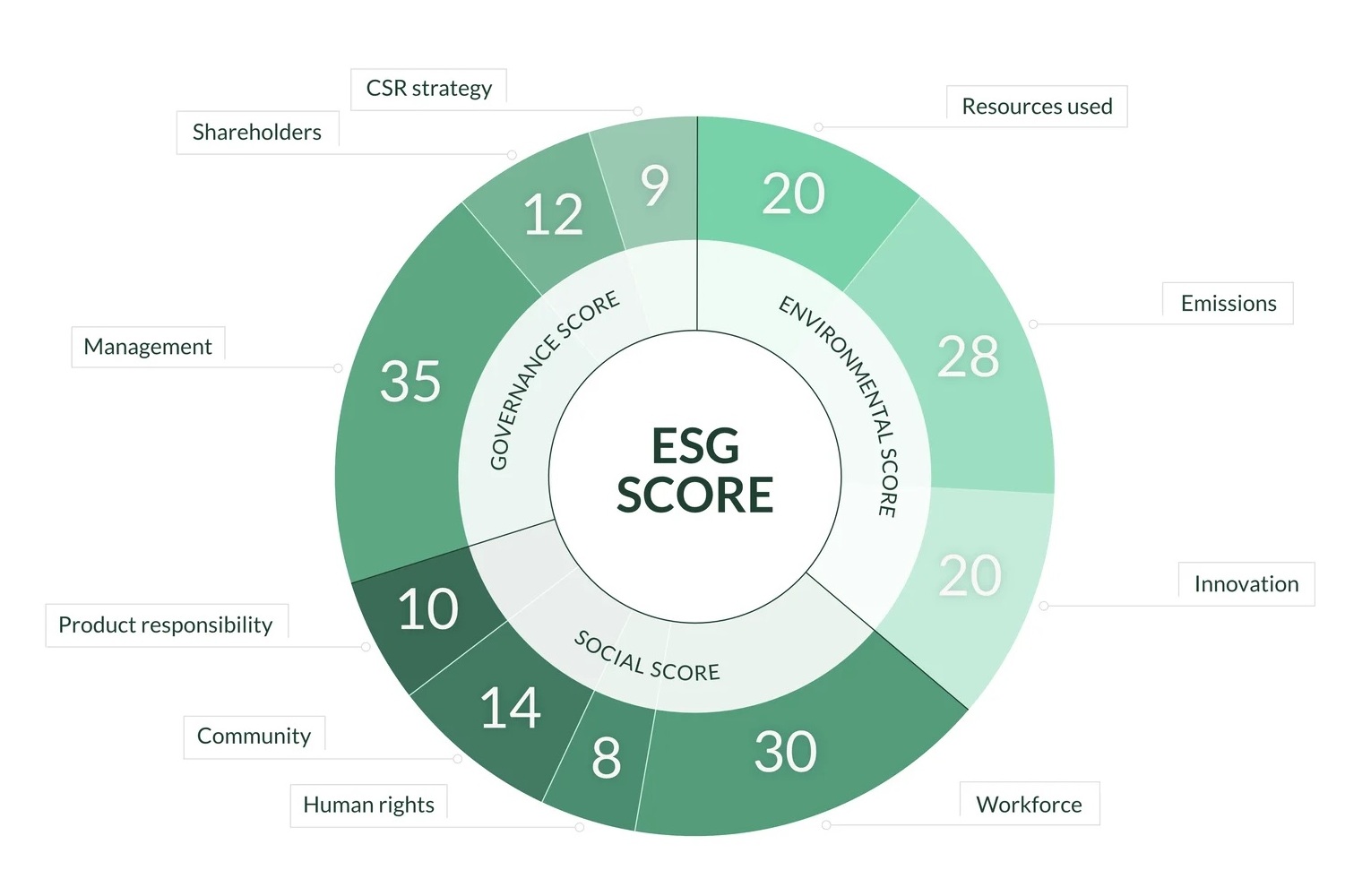The buzz around Environmental, Social, and Governance, popularly known as ESG, is yet to die in India. In fact, with the Securities and Exchange Board of India (SEBI) introducing stricter rules to standardise ESG disclosures among the top 1000 Indian companies, the scope for ESG enabled investments has resurged in the Indian markets. To put things into perspective: ESG investments grew from USD 330 million in 2019 to a massive USD 1.3 billion in 2023 and experts think the pull towards ESG funds is only going to increase in the next few decades.
In this evolving landscape directing the rising interest in ESG, it is essential that we understand some of the key terms involved with the factors. In this article, we have highlighted 15 essential ESG terms, which should provide you with the foundation for navigating this increasingly crucial aspect of modern business strategy.
Here are the 15 ESG terms you should know immediately:
1. Environment: The “E” in ESG stands for Environmental. This aspect of ESG evaluates how a company interacts with and impacts the environment. Key factors in the Environment aspect include how businesses manage their carbon emissions, energy consumption, waste, and natural resources. Recent times have seen companies face increasing scrutiny on their efforts to address climate change, conserve biodiversity, and reduce pollution which fall under the environment factor. A strong environmental performance definitely indicates that a company is committed to sustainability and in its long-term viability.
2. Social: The “S” in ESG stands for Social. This component examines how companies manage relationships with employees, suppliers, customers, and communities. Key areas of the Social aspect include an organisation’s ethical labour practices, employee health and safety, diversity and inclusion, and community engagement. Companies with strong social practices support fair wages, safe working conditions, and equal opportunities for all employees.Social performance indicators also include employee satisfaction, customer loyalty, and the impact the company has on its community.
3. Governance: The “G” in ESG stands for Governance. This aspect evaluates a company’s internal systems, practices, and policies that ensure that there is accountability and transparency. It includes factors like the structure of the board, compensation of executives, rights of shareholders, and the ethical practices of the business in general. An effective governance practice involves an organisation having clear roles and responsibilities for the board of directors, fair and transparent financial reporting, and strong anti-corruption measures.
4. Carbon Neutral: Carbon neutral means achieving a balance between emitting carbon and absorbing carbon from the atmosphere. Companies, individuals, or countries achieve this by reducing carbon emissions as much as possible and using carbon offsets for the rest. Carbon offsets can include activities like planting trees, investing in renewable energy projects or supporting energy efficiency improvements. A lot of it fall within an organisation’s Corporate Social Responsibility (CSR) bucket.In relation to ESG, achieving carbon neutrality reflects a company’s commitment to environmental sustainability.
5. Greenwashing: Greenwashing refers to companies misleading consumers about the environmental benefits of their products or practices. In the context of ESG, greenwashing can occur when businesses make exaggerated or false claims about their environmental initiatives to appear more sustainable than they actually are. It is a deceptive practice that can involve using vague terms, promoting minor eco-friendly efforts while ignoring significant environmental harm, or hiding the lack of substantial action on the company’s part.
6. Greenhushing: Greenhushing involves companies intentionally downplaying or not disclosing their environmental initiatives and sustainability achievements. Greenhushing occurs when businesses fear criticism or scepticism about their efforts, leading them to keep their genuine environmental actions quiet. This approach often stems from the concern that any misstep or lack of perfection in their sustainability journey might attract negative attention or accusations of greenwashing.
Greenhushing differs from greenwashing in a fundamental way. While greenwashing involves exaggerating or falsely presenting environmental efforts to appear more eco-friendly, greenhushing involves withholding information about real, positive actions to avoid scrutiny or backlash.
7. Carbon Accounting: Carbon accounting tracks and measures the amount of carbon dioxide emissions produced by an organisation, project, or individual. This process helps quantify greenhouse gas emissions, allowing companies to identify sources of emissions and evaluate their environmental impact. Carbon accounting involves calculating direct emissions, such as those from fuel combustion, and indirect emissions, like those from electricity use and supply chain activities. Carbon accounting plays a crucial role in the environmental aspect. By accurately measuring emissions, companies can set reduction targets, implement strategies to lower their carbon footprint, and report progress to stakeholders.
8. Benchmarking: Benchmarking in ESG reporting involves comparing a company’s environmental, social, and governance practices and performance against industry standards or best practices from other organisations. This process helps companies gauge their ESG performance, identify gaps, and set improvement goals. Also, in ESG reporting, benchmarking plays a vital role in transparency and accountability. Companies use benchmarking data to assess their progress in areas such as carbon emissions, labour practices, and board diversity.
9. GHG emissions (Scope 1, 2, 3): GHG emissions, or greenhouse gas emissions, refer to the release of gases that trap heat in the atmosphere and contribute to global warming. These emissions are categorised into three scopes. Scope 1 covers direct emissions from owned or controlled sources, like fuel combustion in company vehicles. Scope 2 includes indirect emissions from the generation of purchased electricity, steam, heating, and cooling consumed by the company. Scope 3 encompasses all other indirect emissions that occur in a company’s value chain, such as those from purchased goods and services, transportation, and waste disposal. Tracking and reporting these GHG emissions help companies identify areas for improvement and set their reduction targets. It is a vital aspect included in ESG reports as investors and stakeholders usually use the information to assess a company’s commitment to sustainability.
10. ESG Reporting/ Disclosure Standards: ESG disclosure standards guide companies in reporting their environmental, social, and governance practices. There are quite a few ESG reporting frameworks worldwide. The ISSB standards which include the GRI and TCFD is commonly used worldwide by organisations to declare their ESG reports voluntarily. It includes the globally accepted IFRS S1 and S2 standards. BRSR is primarily used in India and integrates global standards like GRI and ISSB. Is it mandated to be used by the top 1000 companies in India (by market capitalisation).
11. Green Investing: Green investing involves allocating capital to companies and projects that contribute positively to the environment. This type of investment focuses on sectors like renewable energy, energy efficiency, waste management, and sustainable agriculture. The goal is to support initiatives that reduce carbon footprints, conserve natural resources, and promote sustainability. Green investing has also given traction to the popularity of ESG funds in recent times, which focuses on investing in organisations with a proven track record of sustainable and ethical work practices.
12. Integrated Reporting: Integrated reporting in ESG combines financial and non-financial information into a single, cohesive report. This approach provides a comprehensive view of a company’s overall performance, highlighting how its strategy, governance, and prospects contribute to sustainable value creation.The framework for integrated reporting was first developed by the International Integrated Reporting Council (IIRC). It includes reporting the financial data of a company alongside information on itsenvironmental, social, and governance aspects. Theyare usually assessed together by investors to see how the different reports interrelate and impact the long-term success of a company.
13. Materiality: Materiality in ESG refers to the significance of environmental, social, and governance issues to a company’s financial performance and long-term sustainability. Materiality determines which ESG factors are most relevant to stakeholders, including investors, regulators, and customers. These factors vary across industries and can include climate change risks, labour practices, corporate governance, and ethical business conduct. Materiality involves assessing the potential impact of these factors on a company’s operations, financial condition, and reputation.
14. Carbon Footprint: A carbon footprint measures the total amount of greenhouse gases, primarily carbon dioxide, emitted directly or indirectly by an individual, organisation, event, or product. It includes emissions from activities such as transportation, energy use, manufacturing processes, and waste management. Calculating the carbon footprint of any activity helps organisation’s to identify the main sources of emissions and gives them opportunities for reducing their footprint.
The carbon footprint is a crucial metric for evaluating an organisation’s environmental impact. It provides insight into how the operations of a company contribute to climate change.
Companies measure their carbon footprint by assessing Scope 1, 2, and 3 emissions, meaning direct emissions, indirect emissions from purchased energy, and all other indirect emissions in the value chain.
15. Positive/Negative Screening: Positive and negative screening are methods used by investors to select or exclude investments based on specific criteria.Positive screening involves selecting companies that perform well on certain ESG factors. Investors typically look for companies with strong environmental practices and organisational structures. This method, therefore, rewards businesses that contribute positively to sustainability and social responsibility.
Negative screening, on the other hand, excludes companies that engage in activities that are considered harmful or unethical, such as fossil fuel production, tobacco manufacturing, or weapons production. Investors engaged in green investing usually avoid these sectors to align their portfolios with their values and also control the risks associated with poor ESG performances of such organisations.


















.jpg)




